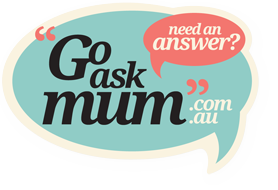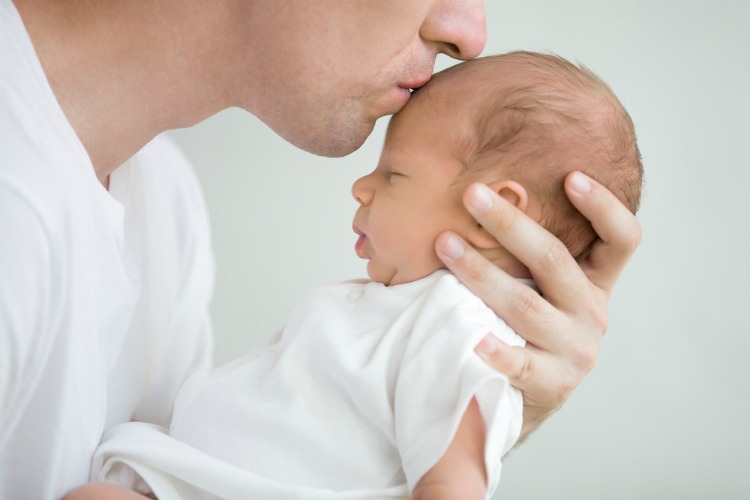Why It’s Surprising to Learn Only 2 Per Cent of Dads Take Paternity Leave
We live in an age where dads are becoming more involved and hands on with their children than ever before.
It’s not unusual to a hear a new dad take time off work to welcome their newborn and be at home for a couple of weeks after the birth of their baby to help with the family transition, and connect with their child.
Even last week Hamish Blake announced he would take a 4 week hiatus from his show with Ande Lee so he could take paternity leave. Hamish and his wife, Zoë Foster Blake, are expecting their second child any day now.
Yet despite the cultural shift of dad’s involvement in family life, only one in 50 men take up the paternity leave scheme available in Australia.
The Sydney Morning Herald reported the paternity leave scheme, which was introduced under Labor in early 2013, hasn’t been utilised as expected by new dads.
Figures show only one in three of those eligible, are taking up the benefit.
The scheme allows for dads to claim two weeks of pay – at the minimum wage from the government when their child is born, providing their income is less than $150,000 and they can pass a work test.
In order for a dad or partner to be eligible for the pay scheme, the applicant must be the biological father of the child, the partner of the child’s birth mother, or an adoptive parent of the child.
A review on the scheme conducted two years ago by the University of Queensland found there was a lack of awareness of the scheme, which meant more dads weren’t applying for it.
Richard Fletcher, associate professor with the Faculty of Health and Medicine Family Action Centre at the University of Newcastle reportedly told the SMH more could be done to ensure dads became more aware of the paid parental scheme. “One key problem is the fact that [the parental leave policy] is focused on a single carer looking after a baby,” he said. “The idea is one adult is needed to look after a baby, and so if the mother is not working then the father must be. [The] idea is that sharing leave is based on the notion that if the dad is going to stop work and be involved in the baby, then the mother has to go back to work herself.”
When all three of my girls were born, we didn’t apply for the paid parental scheme for dads because my husband could access two weeks of his sick leave as part of his parental leave. It meant we got my husband’s full wage instead of the minimum wage amount offered by the government. The parental scheme didn’t work with our job situation either as I was off work to care for my babies.
Dr Fletcher advised more can be done to make sure both mum and dad are well supported in those first few weeks of parenthood.
“They need to do more in making that a more supported transition, so the father should have greater access to leave at the same time as the mother. The father should also have, as happens in other countries, encouragement to go to ante-natal appointments. [This will] encourage him to be part of the process, so it isn’t him arriving on the day of birth in his role as the father, totally unprepared and without any connection to what is going on.”
While there are no plans to alter the current policy, there is no doubt that having dad around in the first few weeks after birth is beneficial for everyone as the family adjust to a newborn.
Hamish’s announcement about taking parental leave is a great example for other dads to follow.
Although just because dad’s aren’t taking up the paid parental scheme, doesn’t mean they’re not taking time off and using other benefits (holiday pay or workplace parental leave pay) to spend time with their newborn and partner.
Every family has a different work life situation. Most couples have the 6-9 months of pregnancy to work out the best parental leave scheme that will work for them. Whether they fund it themselves, apply for the government’s scheme or utilise the parental scheme available at their workplace (if there is one).
Family is important and dads play a vital role in the family unit and can offer a wonderful support to new mums as they navigate birth, breastfeeding and all the emotional and physical changes that occur after birth.
It’s also a wonderful time for dad and baby to connect in those early days.











Hubby had 5 weeks with our first son, 9 weeks with our second son and 10 weeks recently with our third son. He is a shift worker and missed out on too much otherwise, I had c-sections with the last 2 boys and it was amazing having him home to help out with everything so I could also rest when I had the chance. He loved it, it was a tad crazy at first but we worked out a new routine each time we bought a new son home and he got to spend so much quality time with the boys in the first few months while he didn’t have to worry about work.